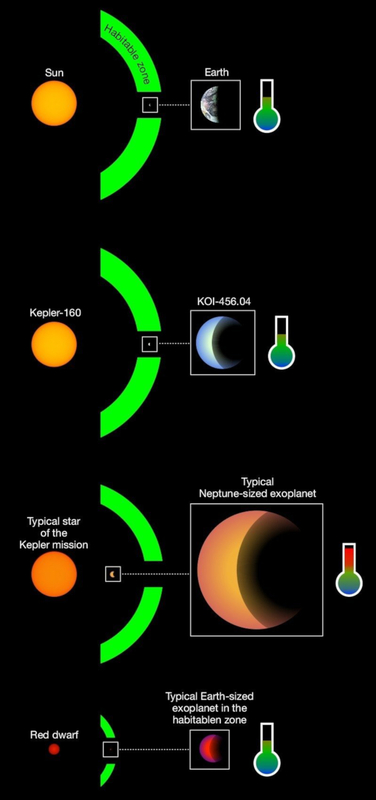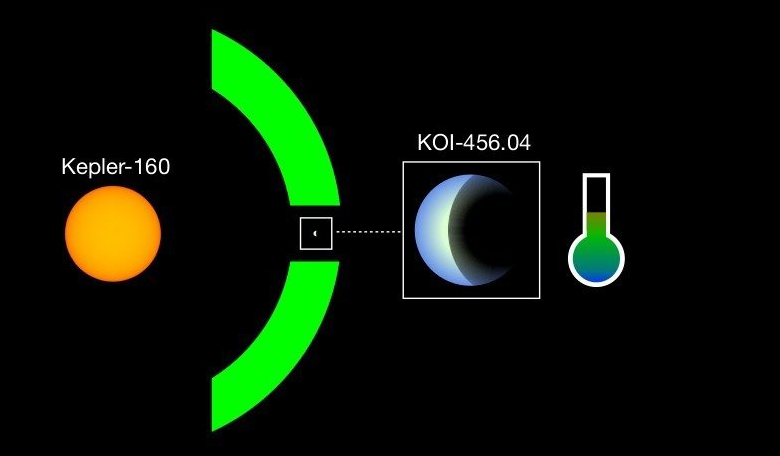In the hunt to find more habitable type worlds, detections of rocky worlds around Sun-like stars is comparatively rare, due to the techniques used to find exoplanets. But by improving on an old detection method, a team of German and US scientists have now found a system that is the mirror image of our own Sun-Earth system.
Of the 4200+ exoplanets discovered in the last couple of decades since planet-hunting became a mainstream activity, most of them orbit red dwarfs – stars that are smaller and cooler than the G-type main-sequence star we call our sun.
The mass range of these planets also tend to be a lot higher than Earth, with most detections picking up super-Earth sized words, sub-Neptunes and hot-Jupiters.
And regardless of their mass they also tend to have orbits relatively close in around their respective host stars.
This is due to the way we search for exoplanets which preferentially favours the discovery of big planets around small, cool stars.
But that is not to say that smaller, rocky Earth-like worlds have not been found - they have, and some of them are also at the right distance to their host star for liquid water to be present on their surface – the essential ingredient for life on Earth. Again though, these planets orbit red dwarf stars.
Red dwarfs do have the advantage of having extremely long lifetimes, meaning that life trying to get a foothold on an exoplanet in orbit around this type of star could potentially have had twice as much time than life on Earth to form and evolve.
However, that appears to be where the good points stop. Many red dwarfs are notorious for emitting high-energy flares and for frying their neighbouring planets.
In addition, because they emit mostly infrared light rather than visible light (like the Sun), for a planet to be considered habitable by human standards, it needs to be really close in to its host star so that its surface can get warm enough for H2O to be in the liquid phase.
This closeness to its host star though has an unfortunate consequence; gravity from the star starts to deform the planet substantially. So much so that the resulting tidal heating in the planet could trigger fatal global volcanism.
All in all, the prospects don’t look good for searching for life on a small planet close in around a cool star; finding a habitable world around a Sun-like star would, as far as our understanding goes, be a better option.
This is what a team led by the Max Planck Institute for Solar System Research in Göttingen have now found. Called KOI-456.0, the planet hs been found around Kepler-160.
At a distance of just over 3000 light years from the solar system, Kepler-160 has a radius of 1.1 solar radii, and a surface temperature of 5200 degrees Celsius (300 degrees less than the Sun); features which make it a close replica of our own host star.
The detection of Kepler-160 is not new. It was discovered around ten years ago, followed by the confirmation of two exoplanets, called Kepler-160b and Kepler-160c, four years later.
Both of these planets though are substantially bigger than Earth and in relatively close orbits around their star.
This close proximity means their surfaces have more in common with planets such as Venus and Mercury where scorching temperatures bake the planets crust.
But, after noticing tiny variations in the orbital period of planet Kepler-160c, scientists suspected that a third planet might be hiding in the system.
After searching through archival Kepler data of Kepler-160, the team found not just one additional planet, but another as well; one of which – KOI-456.0 – has a radius of 1.9 Earth radii and an orbital period of 378 day.
“Our analysis suggests that Kepler-160 is orbited not by two but by a total of four planets,” says lead author of the new study Dr. René Heller who is based at the Max Planck Institute for Solar System Research (MPS) in Göttingen.
Given the Sun-like features of its host star Kepler 160, and its Earth-like orbital period, KOI-456.0 should receive similar amounts of radiation in the same wavelength range that our planet receives.
KOI-456.04 also sits in a region within the stellar habitable zone – the distance range around a star where liquid water might pool on the surface of an orbiting planet.
“KOI-456.01 is relatively large compared to many other planets that are considered potentially habitable. But it’s the combination of this less-than-double the size of the Earth planet and its solar type host star that make it so special and familiar,” Heller clarifies.
Consequently, the surface conditions on KOI-456.04 could be similar to those we have on Earth. “If KOI-456.04 has a mostly inert atmosphere with a mild Earth-like greenhouse effect, then its surface temperature would be +5 degrees Celsius on average, which is about ten degrees lower than the Earth’s mean global temperature”, say the international team.
To find the two new planets, Heller and Michael Hippke, co-author of the new work, decided to use a detailed physical model of the stellar brightness variation of Kepler 160 rather than look for minute temporary dimmings of the star’s luminosity output - a usual telltale sign that a planet is orbiting a star.
“Our improvement is particularly important in the search for small, Earth-sized planets”, Heller explains. “The planetary signal is so faint that it’s almost entirely hidden in the noise of the data. Our new search mask is slightly better in separating a true exoplanetary signal from the noise in the critical cases,” Heller adds.
Not much is known about the other new companion planet – Kepler-160d – and it cannot currently be ruled out completely whether KOI-456.04 is in fact a systematic measurement error or a statistical fluke instead of a genuine planet detection, but the odds are 85 percent in its favour that it is the real deal.
To verify for sure – obtaining a formal planetary status requires 99 percent certainty – some of the Earth’s most powerful ground-based telescopes might be able lend a hand in validating this candidate.
Otherwise the team will have to wait for the launch of PLATO in 2026 to corroborate their findings.
Developed by ESA, the PLAnetary Transits and Oscillations of stars (PLATO) main mission is the discovery of Earth-sized planets around Sun-like stars.
The MPS is deeply involved in the PLATO mission and is currently building the PLATO Data Center.
 Distant worlds: typical exoplanets orbiting around a Sun-like star are about the size of Neptune and are in orbit in the habitable zone (third picture from above). Almost all of the Earth-sized planets known to have potentially Earth-like surface temperatures are in orbit around red dwarf stars, which do not emit visible light but infrared radiation instead (bottom panel). The Earth is in the right distance from the Sun to have surface temperatures required for the existence of liquid water. The newly discovered planet candidate KOI-456.04 and its star Kepler-160 (second panel from above) have great similarities to Earth and Sun (top panel). Image: MPS / René Heller
Distant worlds: typical exoplanets orbiting around a Sun-like star are about the size of Neptune and are in orbit in the habitable zone (third picture from above). Almost all of the Earth-sized planets known to have potentially Earth-like surface temperatures are in orbit around red dwarf stars, which do not emit visible light but infrared radiation instead (bottom panel). The Earth is in the right distance from the Sun to have surface temperatures required for the existence of liquid water. The newly discovered planet candidate KOI-456.04 and its star Kepler-160 (second panel from above) have great similarities to Earth and Sun (top panel). Image: MPS / René Heller
If you've enjoyed reading this article, please consider subscribing to ROOM Space Journal to gain immediate and full access to the latest magazine feature articles and receive your own print and/or digital copies of the quarterly ROOM magazine delivered electronically or direct to your door.











